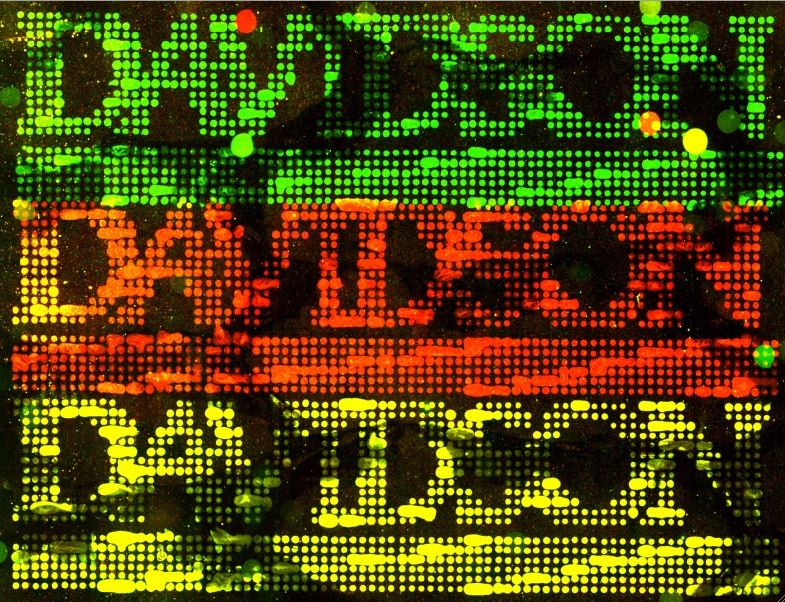

You will continue to study your favorite disease-linked gene/ protein by tracking the expression of its yeast ortholog under different conditions. We use yeast as a model system for genomics because it is a eukaryote and is thus relevant to human cell biology, is very easy to culture in the lab for large scale RNA purification, is ammenable to site-specific mutagenesis and has very well-studied biochemical pathways. Before you get started, you should do the following...
*You may notice that the SGD has a huge microarray resource called Expression Connection. You will use this later to expand your findings.
These data were generated and provided by the lab of Professor Laura Hoopes at Pomona College.
Hybridization 1 - wild type log phase growth vs. stationary phase growth
PO74bottom_635.tiff - Cy3, wild type yeast, stationary phase growth
PO74bottom_532.tiff - Cy5, wild type yeast, log phase growth
Hybridization 2 - wild type stationary phase growth vs. log phase growth
PO968WlogGWstR_635.tiff - Cy3, wild type yeast, log phase growth
PO968WlogGWstR_532.tiff - Cy5, wild type yeast, stationary phase growth
Hybridization 3 - wild type stationary phase growth vs. stationary phase growth
(same vs. same, that's not a typo)
PO75TOP_635.tiff - Cy3, wild type yeast, stationary phase growth
PO75TOP_532.tiff - Cy5, wild type yeast, stationary phase growth
Hybridization 2 - snf1 deletion mutant vs. wild type
PO73Bottom_635.tiff - Cy3, wild type yeast, stationary phase growth
PO73Bottom_532.tiff - Cy5, snf1 deletion mutant yeast, stationary phase growth
Hybridization 3 - asr1 deletion mutant vs. wild type
PO74Top_635.tiff - Cy3, wild type yeast, stationary phase growth
PO74Top_532.tiff - Cy5, asr1 deletion mutant yeast, stationary phase growth
Hybridization 4 - msn2/msn4 deletion mutant stationary phase growth vs. log phase growth
PO968MlogGMstR_635.tiff - Cy3, msn2/msn4 deletion mutant, log phase growth
PO968MlogGMstR_532.tiff - Cy5, msn2/msn4 deletion mutant, stationary phase growth
Hybridization 5 - snf1 deletion mutant stationary phase growth vs. log phase growth
PO968SlogGSstR_635.tiff - Cy3, snf1 deletion mutant yeast, log phase growth
PO968SlogGSstR_532.tiff - Cy5, snf1 deletion mutant yeast, stationary phase growth
Hybridization 6 - msn2/msn4 deletion mutant stationary phase growth vs. wild type log phase growth
PO968WlogGMstR_635.tiff - Cy3, wild type yeast, log phase growth
PO968WlogGMstR_532.tiff - Cy5, msn2/msn4 deletion mutant yeast, stationary phase growth
Gene list file for all experiments: yeast_GCAT_MT.txt
Gene info file for all experiments: yeastinfo.info
The slides (microarrays) used in the experiments above were produced at Washington University, St. Louis. To produce these microarrays, 70-mer oligos from over 6000 yeast ORF's were printed onto epoxy slides.
Microarray technology: